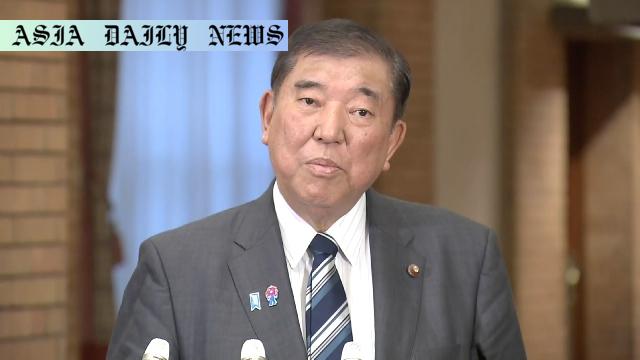Tariffs drive Japan’s push to reach a package deal with the US, focusing heavily on autos and agricultural concessions.
Tariffs are key to Japan’s negotiations with the US, with autos being a focal issue.
Both nations aim to reach a package deal by mid-May or later.
Japan seeks to import more US vehicles, corn, and soybeans as part of the negotiation.

Understanding the Current Impasse on Tariffs
Tariffs have long been a contentious issue in international trade, often dictating relationships even between allied nations. Japan and the United States, despite their collaborative history, find themselves in the midst of challenging negotiations centered on tariffs. At the heart of the matter lie the existing tariffs imposed by the Trump administration, particularly those concerning steel and automobiles. This issue resonates deeply with policymakers in Tokyo, as the automotive sector is not just a vital part of Japan’s economy—it’s a cornerstone of its global trade identity.
Over recent discussions, Japan’s Chief Tariff Negotiator Akazawa Ryosei has been pushing for concessions from the United States that could mitigate the “regrettable” impact of these tariffs on Japan’s industries. Yet, Washington is holding firm on its stance: special treatment cannot be extended exclusively to Japan. This insistence adds layers of complexity to the negotiations and demonstrates the challenges faced by nations navigating the intricate waters of global trade.
Japan’s Strategic Approach to Reach Middle Ground
Despite these challenges, both sides continue to inch toward common ground. Japan, for its part, has indicated a willingness to review its internal policies to facilitate greater imports of American products, including autos, soybeans, and corn. By doing so, Tokyo aims to demonstrate its commitment to fostering a mutually beneficial trading environment. Analysts believe such moves could help alleviate some of the friction surrounding the discussions.
In a bid to entice American concessions, Japan also proposed deepening technical cooperation in industries like shipbuilding, an area where Japan’s expertise might benefit the United States. Meanwhile, the Trump administration has presented its own list of “non-tariff barriers,” hoping to encourage Japan to further liberalize its markets. While significant differences remain, both governments are intent on finding a path forward that ensures equitable trade relations and promotes economic stability.
Focus Areas Moving Forward
The outcome of these negotiations carries profound implications not only for Japan and the United States but for the broader global economy. A successful deal could pave the way for enhanced economic cooperation and growth, particularly in sectors like automotive manufacturing and agriculture. Analysts predict that a package deal, which is asserted to include technical cooperation and expanded trade opportunities, could serve as a blueprint for resolving similar disputes on a global scale.
Moving forward, Japan’s government has been tasked with meticulously studying every aspect of the negotiations and identifying areas where compromise might be achievable. As both nations prepare for a possible third round of discussions in mid-May or later, expectations remain high. Prime Minister Ishiba Shigeru has expressed optimism, stating that the talks so far have been “constructive” and have laid substantial groundwork for progress.
The importance of these discussions cannot be overstated, especially given today’s increasingly interconnected and interdependent world economy. By carefully navigating these disputes, Japan and the United States could potentially set a new precedent for resolving complex trade disputes between deeply entwined economic powers.
Commentary
The Stakes of the Tariff Talks
The ongoing discussions between the United States and Japan regarding tariffs are emblematic of the high-stakes, intricate nature of global trade today. These negotiations underscore the undeniable fact that even longstanding allies can have competing economic interests, particularly when issues as critical as tariffs on key sectors are at play. Japan’s push to re-examine auto tariffs, in particular, speaks volumes about the centrality of this industry to its economy.
One can only imagine the pressure felt by negotiators on both sides. From Japan’s dependence on automotive exports, which serve as a lifeline for its economy, to America’s determination to safeguard its domestic industries, the stakes are incredibly high. Yet, what makes these talks even more remarkable is the constructive approach both nations seem committed to. Prime Minister Ishiba’s description of the talks as “constructive” is a testament to this shared resolve.
The Role of Concessions and Compromises
What stands out about these negotiations is Japan’s openness to compromise. By proposing measures like easing rules for importing American vehicles or expanding its purchase of agricultural products such as corn and soybeans, Japan has shown its willingness to meet the United States halfway. These concessions, if implemented, could not only facilitate a breakthrough in the ongoing tariff impasse but could also serve as a model for future negotiations elsewhere.
However, the complexity of these talks highlights how difficult it is to strike a balance between domestic priorities and international aspirations. For the United States, maintaining its position on tariffs without alienating a key trading partner like Japan is akin to walking a tightrope. Still, taking a hard line on “non-tariff barriers”—while crucial for protecting American interests—must be handled deftly to avoid derailing progress.
Looking Forward to a Mutually Beneficial Outcome
Ultimately, one can only hope that these negotiations culminate in a deal that leaves both parties satisfied while also fostering stronger bilateral relations. The implications of these talks extend far beyond immediate economic considerations. They signal the broader geopolitical dynamics at play in a rapidly evolving global landscape.
As preparations for the anticipated third round of talks begin, it is crucial that negotiators continue to draw from the lessons of previous discussions. Constructive dialogue, mutual respect, and a willingness to compromise will be key. After all, achieving a trade deal that genuinely benefits both nations—and sets a positive example for global trade—is a goal worth striving for.


